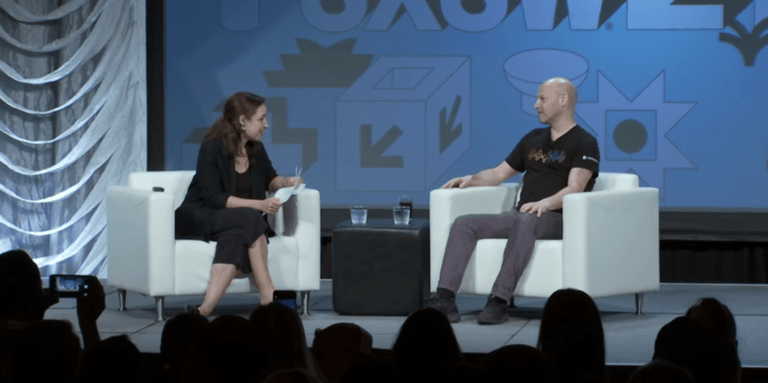On Thursday (March 14th), Joseph Lubin, co-founder of Ethereum and founder of ConsenSys, presented his thoughts on a wide variety of topics at the SXSW 2019 Conference in Austin, Texas.
Joe’s comments during an interview with Manoush Zomorodi, co-founder of Stable Genius Productions (which produces the popular blockchain-focused podcast ZigZag).
Here are some of the main highlights from this interview:
- Joe read Satoshi Nakamoto’s Bitcoin white paper (“Bitcoin: A Peer-to-Peer Electronic Cash System”) in early 2011. It “clicked” for him “really early.”
- Before founding Consensys, he was “lucky enough to meet Vitalik Buterin, the guy who ‘invented’ Ethereum” around after one month after Vitalik wrote the initial version of the Ethereum white paper.
- Joe then spent about a year helping to get the Ethereum platform ready for public release. A short time before this event, Joe decided to start ConsensSys because “there weren’t a lot of people building at the application layer.”
- The ConsenSys team started by trying to create decentralized applications (DApps) for Ethereum, but because there were no developer tools for Ethereum at that time, ConsenSys ended up building varius developer tools for Ethereum and thereby “opening up that ecosystem.”
- ConsenSys tries to be as decentralized as possible in its organizational structure (by trying to get away from hierarchies as much as possible). One of the tools they have created (as part of their “Future of Work” project) to help with this is called SOBOL, which Joe tweeted about on 2 November 2018:
We're introducing a new tool to manage decentralized organizations. Used internally at @ConsenSys until now, SOBOL helps flat groups of individuals self-organize. View an employee map, set roles and goals, browse the activity feed, or play with the API. https://t.co/qSTUFXhCAz pic.twitter.com/CFJ7XVP6Lt
— Joseph Lubin (@ethereumJoseph) November 2, 2018
- The Civil (CVL) token launch was “the most successful failed token launch in history.” It had about “10X more participation” than other “monetary more successful” token launches that ConsenSys has done. Around 1.5 million tokens are out there. The Civil platform for sustainable ethical journalism is “open for business” at the moment.
- ConsenSys is planning to do around four or five token launches this year. These will all be utility tokens.
- Joe says that “there’s way more activity in our ecosystem right now than there was a year ago or 18 months ago.”
- “Ethereum can currrently handle somewhere between 14 and 27 transactions per second.” He sees Ethereum as “the base trust layer” (layer 1).
- Layer 2 is a scalability layer. He predicts that some layer 2 solutions for Ethereum will be able to handle up to a million transactions per second by the end of 2019.
- Ethereum 2.0 is 18-24 months away.
- Ethereum’s move to PoS means very little electricity use will be used and no special hardware will be needed to run a node (a regular laptop should be fine).
- One example of a crypto project that is not backed by ConsenSys and that Joe considers promising is MakerDAO.









